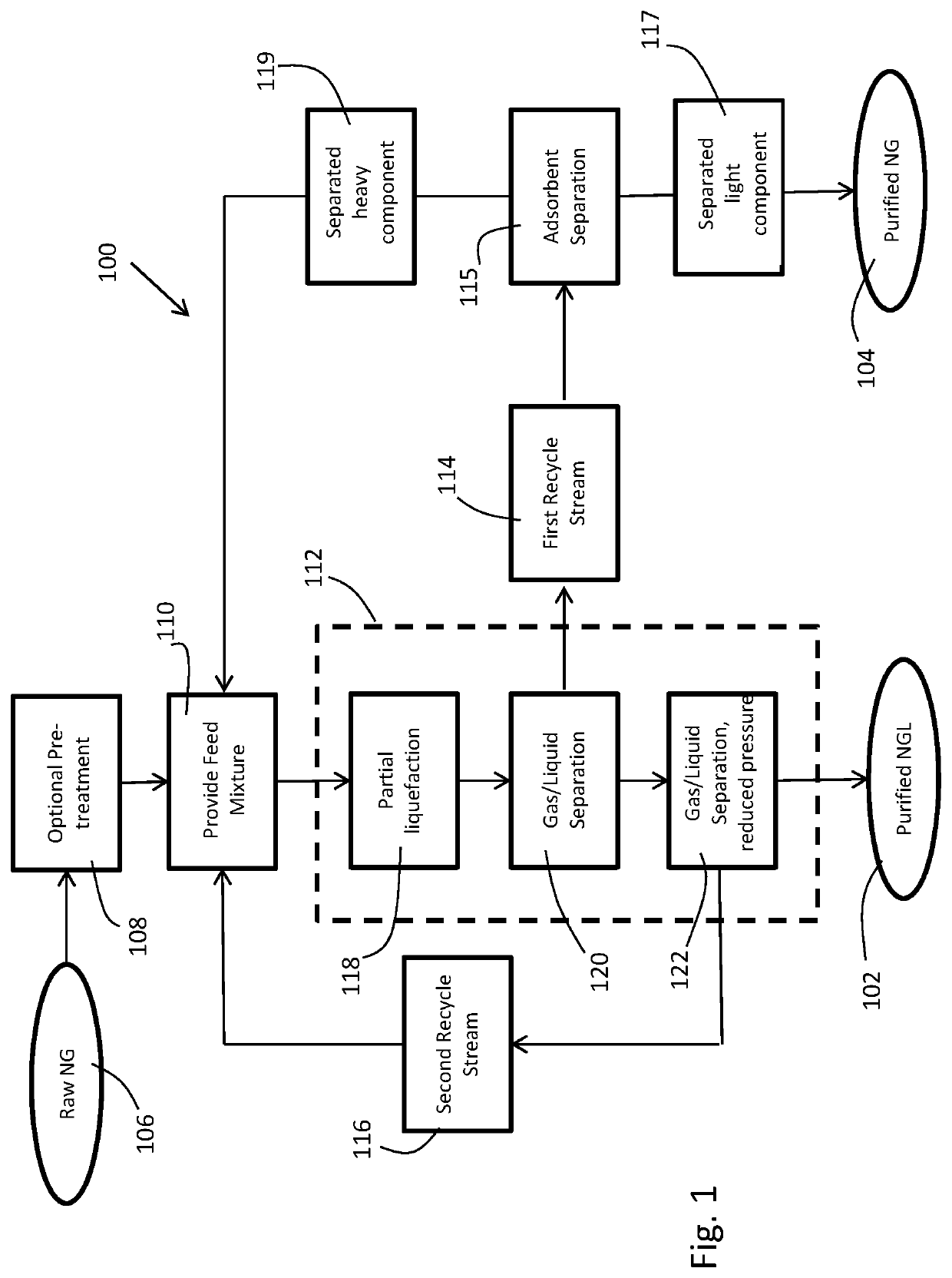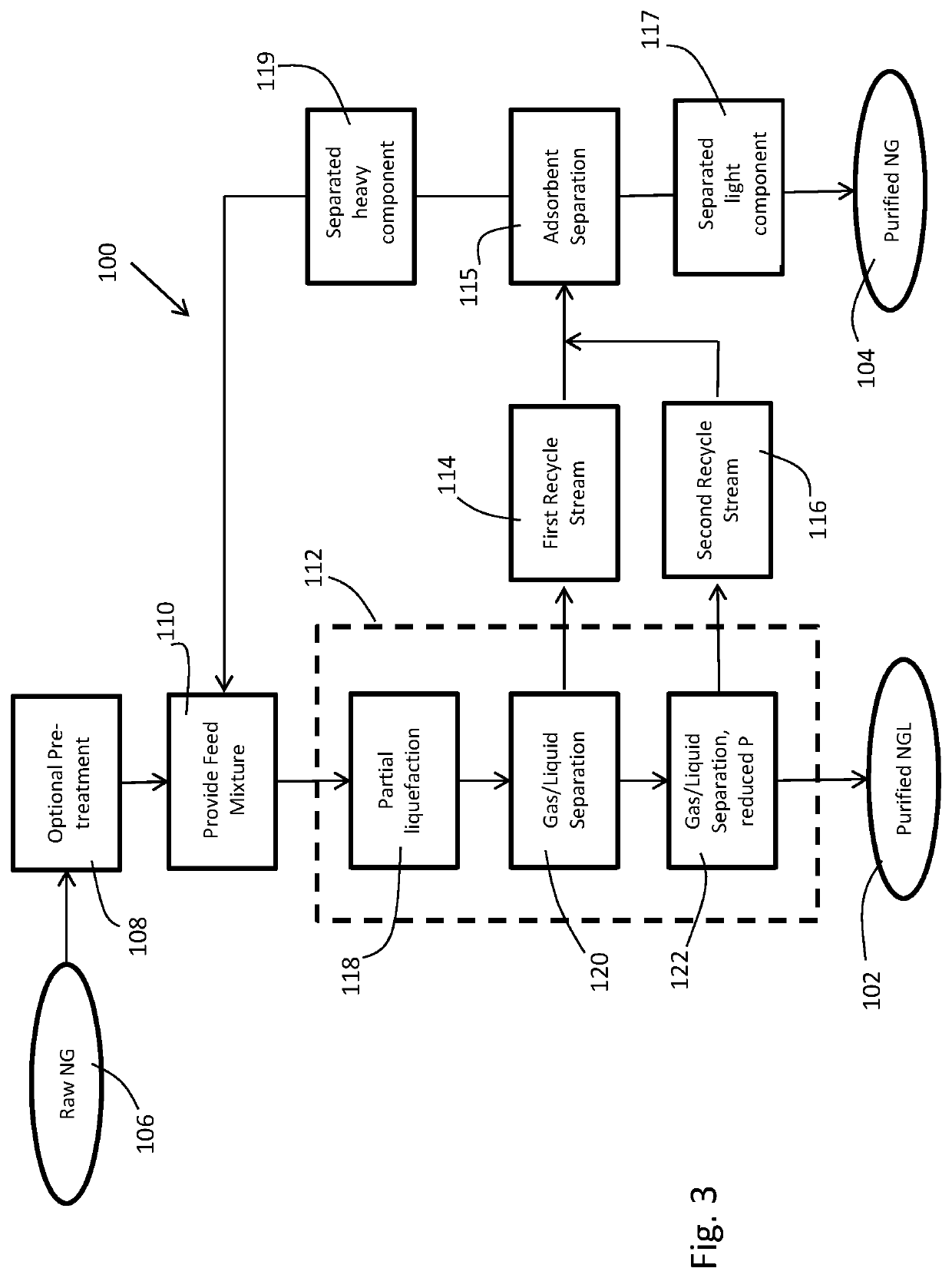Methods and systems to separate hydrocarbon mixtures such as natural gas into light and heavy components
a technology of hydrocarbon mixture and hydrocarbon mixture, which is applied in the field of methods and systems to separate hydrocarbon mixtures, can solve the problems of inability to use raw gas, inability to meet the needs of industrial production, etc., and achieves high c3+ purity, improved liquefaction ability, and high yield of c3+ hydrocarbons.
- Summary
- Abstract
- Description
- Claims
- Application Information
AI Technical Summary
Benefits of technology
Problems solved by technology
Method used
Image
Examples
example
[0102]This example provides a material balance to illustrate the performance of using the method 100 of FIG. 1 in the system 200 of FIG. 4. The material balance is shown in Table 2 of FIG. 7, wherein the amounts of materials are expressed on a mole percent based on the total moles in the stream. In Table 1, the streams referred to in Table 2 are defined as follows:
TABLE 1Stream inTable 2Corresponding stream in FIG. 4FeedNatural gas fed to mixer 210 via lines 204 and208CombfeedFeed mixture fed to system 214 via line 2122Compressed feed mixture fed to heatexchanger 220 via line 2123Feed mixture fed to chiller 222 via line 2124Pressurized and cooled, partially liquefied feedmixture fed to tank 224 via line 2235First recycle stream fed to heat exchanger 220via line 2286Separated liquid stream fed to tank 240 via line226OffgasSecond recycle stream fed to mixer 210 fromtank 240 via line 242PSAFeedFirst recycle stream fed to PSA system 232 vialine 230TailHeavy tail stream withdrawn from PS...
PUM
| Property | Measurement | Unit |
|---|---|---|
| pressure | aaaaa | aaaaa |
| pressure | aaaaa | aaaaa |
| pressure | aaaaa | aaaaa |
Abstract
Description
Claims
Application Information
 Login to View More
Login to View More - R&D
- Intellectual Property
- Life Sciences
- Materials
- Tech Scout
- Unparalleled Data Quality
- Higher Quality Content
- 60% Fewer Hallucinations
Browse by: Latest US Patents, China's latest patents, Technical Efficacy Thesaurus, Application Domain, Technology Topic, Popular Technical Reports.
© 2025 PatSnap. All rights reserved.Legal|Privacy policy|Modern Slavery Act Transparency Statement|Sitemap|About US| Contact US: help@patsnap.com



